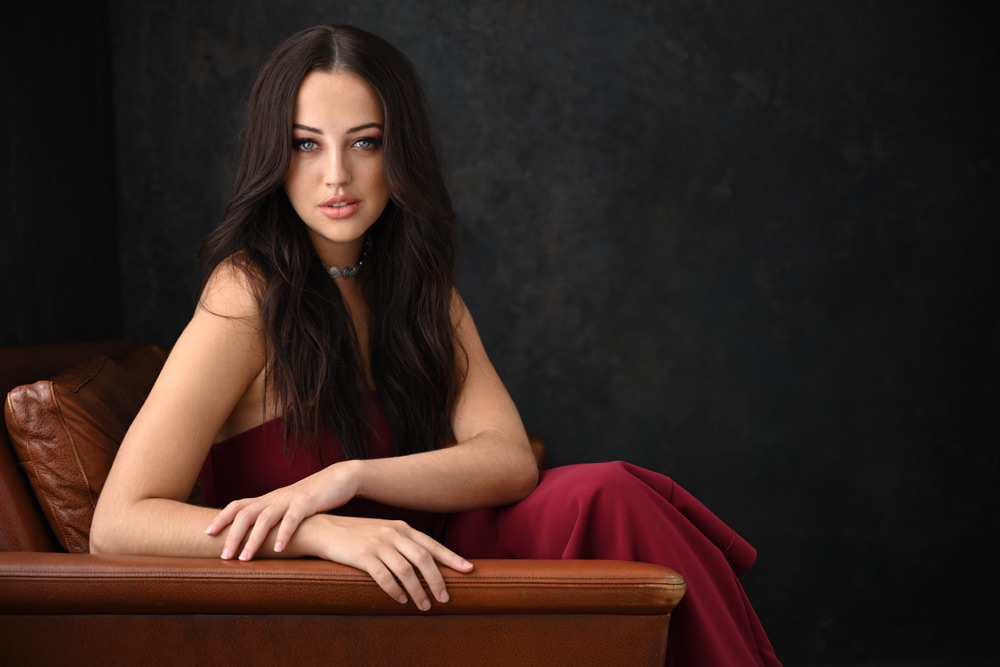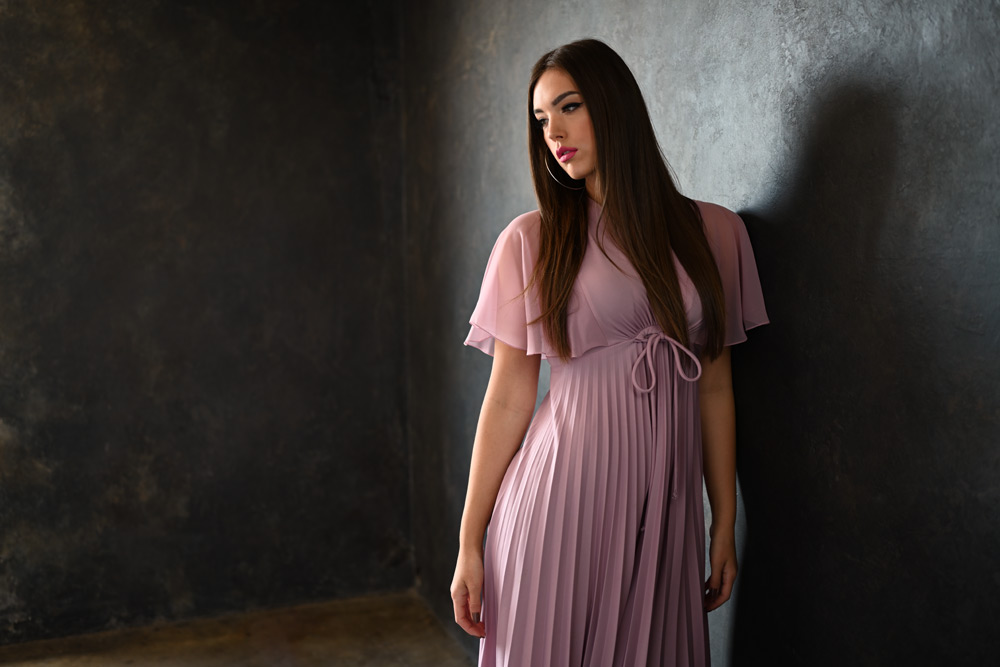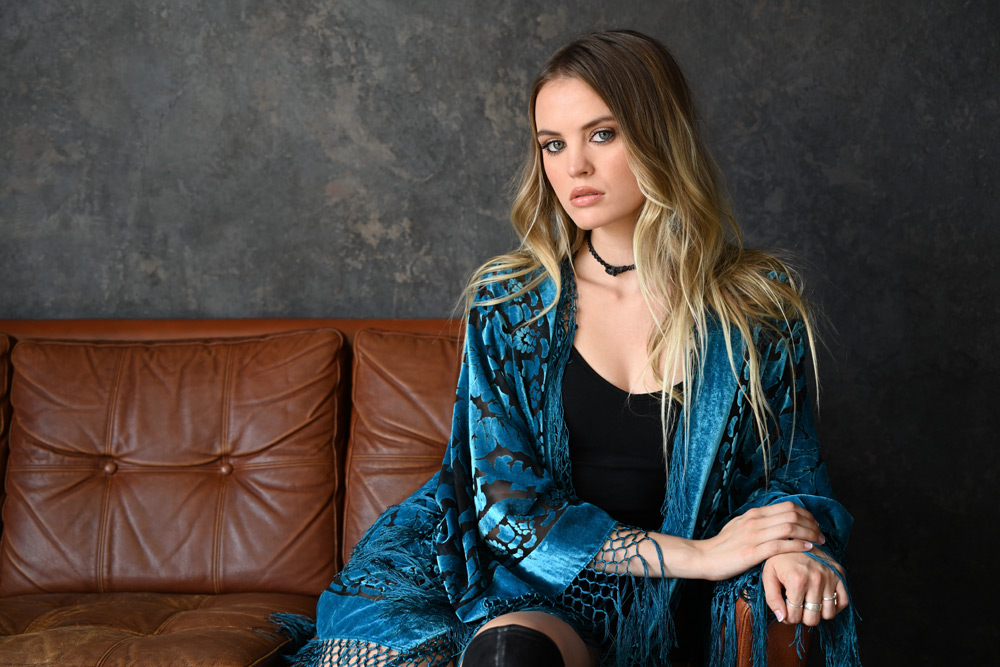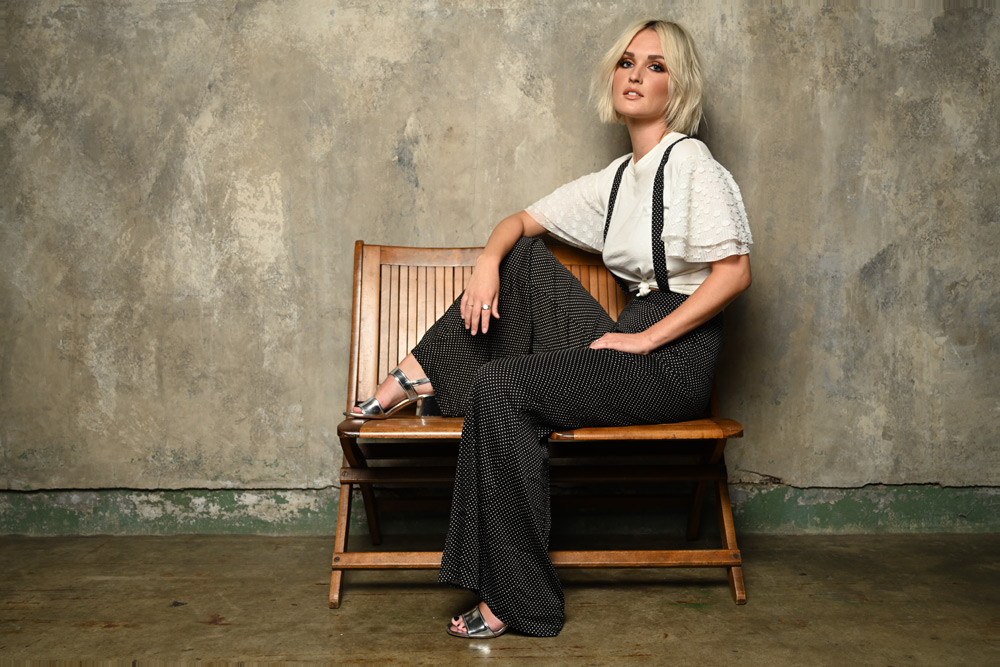Z 7: Let's Get to Work
This camera carries a lot of the Nikon legacy—a high continuous shooting rate, extremely high resolution and superior optical performance.
For Todd Owyoung the big deal about getting his hands on the Z 7 was...well, getting his hands on the Z 7.
Like a lot of photographers, he had been anticipating the first Nikon full-frame mirrorless camera, and when he got one he set out to shoot a series of environmental portraits of musicians and models in a Nashville photography studio. His aim: find out what the camera was capable of, and equally important, how it would fit into his style of shooting.
"I'm a music photographer," Todd says, "and anything related to music is what I love to photograph—studio portraits, environmental portraits, backstage photography, concerts and festivals." His concentration goes to his subjects and everything that showcases them. He is hyper aware of light, color and texture; of framing and composition; of the nuances of posing and the moment a candid image makes a maximum impact. Gear is a primary consideration, but only to the extent that it advances the process.
"Part of the beauty of the studio was the [natural] light was constantly changing and giving different looks—more diffuse during certain parts of the day, more direct during other parts. Being able to play with that light was a really enjoyable part of the shoot—that and placing the models to get different looks. I was shooting with the camera set for high continuous mode at nine frames per second. I generally keep cameras set for the highest frame rate—when you need it, the speed is there—but I used primarily single shots." Z 7, NIKKOR Z 24-70mm f/4 S, 1/200 second, f/4, ISO 320, manual exposure, Matrix metering.
No Limits
Todd photographed exclusively with the camera's dedicated NIKKOR Z lenses—the 35mm f/1.8 S, the 50mm f/1.8 S and the kit lens 24-70mm f/4 S. "The 35mm, with its fast aperture, was especially beautiful to have, and the 24-70mm had a good range of focal lengths for tighter photos."
Had he been shooting even tighter, head-shot style photos, he'd have used the Mount Adapter FTZ and the F-mount 85mm and 105mm NIKKOR portrait lenses he uses on his D850. "I think the real beauty here is that you can add the new camera right now and not be limited as far as lenses," Todd says. "The adapter makes it a no-brainer—you get the same autofocus performance and optical quality."
"This is by natural light, and she was very close to the window, which had a sheer curtain on it that diffused the light. This is typical NIKKOR sharpness, but I think even more so than ever. I was shooting wide open, and the sharpness edge to edge—I was blown away. I could compose to the edges of the frame and zoom in and have the confidence that it would be as sharp as I needed it to be. Part of that was the AF system—amazing. You can push it to the absolute edge." Z 7, NIKKOR Z 24-70mm f/4 S, 1/250, f/4, ISO 200, manual exposure, Matrix metering.
Discovery and Transition
What Todd discovered as he worked with the Z 7 was what he expected from a Nikon camera. There were also some new opportunities.
"I can see using the camera when a very discreet and silent camera would be necessary for backstage candids of artists," he says. "The combination of small format factor, the fast aperture of the two primes and silent mode shooting would come into play because I'd want to be as inconspicuous as possible. If I'm photographing artists and I've been let into their world to shoot essentially private moments, I never want to be part of those moments."
Todd found that use of the electronic viewfinder was an easy transition. "There was no real learning curve. Any delay was imperceptible, and no impression of delay took me out of the moment. I was able to make images and stay concentrated on the lighting, the framing, the model. It was totally natural going to the EVF from a DSLR—it's that clear, sharp and responsive. For the most part I forgot I was using an EVF."
Overall it took him practically no time to become comfortable with the camera, and only a little longer to discover he could do some things with it that eluded him with his DSLRs. "Because of the 90 percent AF coverage of the frame—it's like edge-to-edge autofocus—I was making pictures where the subject's head was at the very top of the frame. Rather than focus and recompose, it was just focus."
He especially appreciated the ability to customize the Z 7 to the way he likes to work by making access to favored features and processes readily available. "The touch screen arrangements, the changes to function buttons—I loved that. One thing that was really great was that while shooting still photos I set the video record button to zoom in 100 percent so I could check image focus. To be able to quickly have that visual confirmation if I wanted it, then go back to normal framing, was amazing."
And because he knew he'd be shooting some images with an SB-5000 Speedlight, he set the Z 7's Custom menu so he could quickly access remote flash options from the camera. "I could press one button to get to the flash controls and dial the power up or down."
Going into this Z 7 shoot Todd expected there'd be benefits and advances, as well as a bit of a learning curve. The benefits were obvious; the curve barely noticeable. There was learning along the way, but the process this time pretty much fit his standard pattern: pick up the Nikon and go to work.












